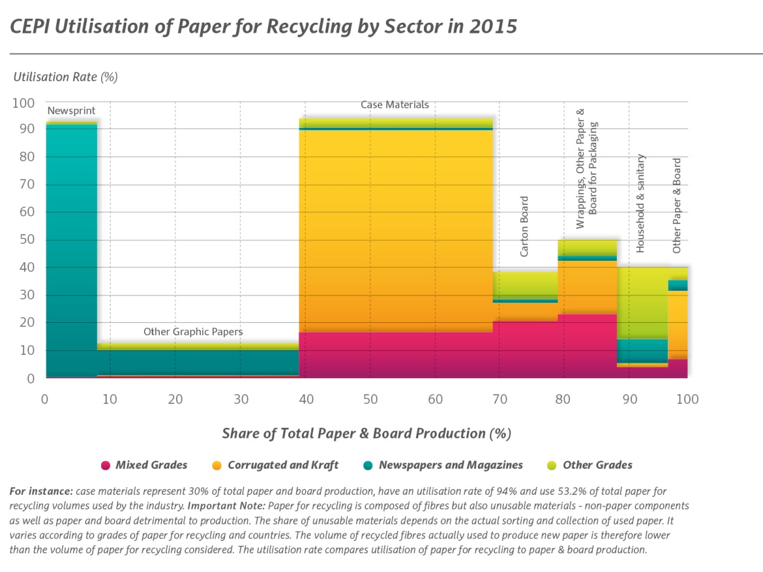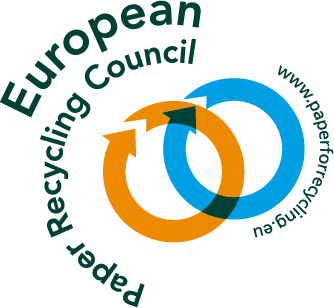The Awarding Ceremony of the 7th Edition of the European Paper Recycling Awards took place in the European Parliament in Brussels on January 21 2020.
Discover here everything about the 2019 edition of the awards.

The Awarding Ceremony of the 7th Edition of the European Paper Recycling Awards took place in the European Parliament in Brussels on January 21 2020.
Discover here everything about the 2019 edition of the awards.
The Awarding Ceremony of the 7th Edition of the European Paper Recycling Awards took place in the European Parliament in Brussels on January 21 2020. The event takes place every two years with the specific goal to highlight and reward European projects, initiatives or campaigns that change the way we recycle paper in Europe and help us achieve our ambitious goal of a 74% paper recycling rate by 2020.
The ceremony awards the winners who have presented excellent and game-changing projects in two categories: Innovative Technologies and R&D and Information & Education.
The winners of this edition were the German company Repulping Technology GmbH & Co. KG for its technological developments and the international association Pro Carton for the educational work about paper recycling and its circular economy.
The first winner invented a new technology that makes the extraction of pulp fibres for recycling from products mixing papers and other material a lot easier and more energy efficient. The company’s new invention, the cavitation pulper, a machine exploiting the physical principle of cavitation, allows for an almost 100% recovery of the fibres from these products with an energy efficiency about 50% better than other technologies.
Pro Carton set up a European-wide educational program aimed at children primarily aged between 8 and 11 years and called TICCIT (Trees Into Cartons, Cartons Into Trees). The first of its geographical size, the program allows businesses across the paper value-chain to explain in schools the many benefits of recycling. The program reports a very high-degree of appreciation among the children with an expected spill over effect in families, leading to broader awareness of the importance of paper recycling.
With the Green Deal, the EU has developed a new ambitious leadership to become the world’s first climate-neutral continent. The Green Deal sets a path for a just and socially fair transition that leaves no one behind. But the involvement in climate action from all sectors is crucial. The European Paper Recycling Award is a great way to shed light on innovative, best-practice projects and initiatives in the field of paper recycling and I am very glad to see the strong interest and the innovative applications that we have received commented Jytte Gutteland, Swedish politician, Member of the European Parliament Committee on the Environment, Public Health and Food Safety, host of the EPRC Award 2019 and member of its jury.
Her fellow jury member the EPRC Chairperson Angelika Christ stated that: Recycling is the promise to save resources by repeatedly using them. For this we need the best available ideas. This year’s competition demonstrated again the creativity of people to make our world a better place by developing new technologies, ideas and communication to save material and resources.
During the ceremony, the Secretary of the EPRC and Cepi Raw Materials Director Ulrich Leberle presented the findings of the EPRC Monitoring Report 2018. He said The Monitoring Report confirms that paper recycling in Europe continues to be on the right path and on the rise, reaching the level of 71.6% in 2018, even if the latest data shows a slight decline due to Chinese restrictions of import.
Jury members for the 2019 edition of the European Paper Recycling Awards:
Angelika Christ
|
Angelika Christ was appointed as a chair of EPRC for a two years period starting as of 4 April 2019. She has been the Secretary General of FEFCO since 2007 and the Secretary General of CITPA since 2014. She has been involved in associations of corrugated board manufacturers for over 20 years, first in Germany and then at the European level. Prior to FEFCO, she was the Managing Director of the German Association of Corrugated Board Industries (VDW) from 1996 until 2007. Her first professional experience was with the German Chemical Industry Association (VCI), where she executed various positions from 1980-1996. |
Jytte Guteland
|
Jytte Guteland is a Swedish politician and Member of the European Parliament from Sweden. She is a member of the Social Democrats, part of the Progressive Alliance of Socialists and Democrats. She holds a master’s degree in Economics from Södertörn University. She was a member of the national executive board of the Social Democratic Youth League from 2005 to 2007 with responsibility for the welfare issues. She was chairperson of the Social Democratic Youth League from 2007 to 2011.ytte Guteland was elected to the European Parliament during the 2014 European Parliament election in Sweden. She has since been serving on the Committee on the Environment, Public Health and Food Safety. |
ASPAPEL
|
ASPAPEL, the Spanish Association of Pulp and Paper Manufacturers is the 2017 winner of EPRC Awards, Information and Education category. Blue Birdies is a tool developed by ASPAPEL for Spanish municipalities aimed at improving separate collection of paper and board and achieving the recycling targets set by the Waste Directive. ASPAPEL will be represented by David Barrio and Andrea Orallo. |
Susanne Haase
|
The trained editor Susanne Haase has been enthusiastically reporting for more than 15 years on the international paper and pulp industry. For many years she was responsible for the journals ipw (International Paperworld), Paperazzo and Biofibre Magazine as Editor-in-Chief. In addition, the native German worked as chief reporter for apr (Current Paper Review – Current Paper Review) and avr (General Nonwoven Report – Current Nonwoven Report). Since 2015 she is also in charge of the Journal of the IFPTA (International Forest Product Transport Association), which focusses on the international transport of forest-based products. |
Save
Save
Save
Save
Save
Save
Save
Save
Save
Save
Save
Save
Save
Save
Save
Save
Save
Save
Save
Save
Save
Save
The European Paper Recycling Award distinguishes between two main categories to ensure a fair comparison among the different entries.
Eligible projects, initiatives or campaigns will be evaluated based on the following criteria:
To apply, please click check the Application section.
There are five previous editions of the European Paper Recycling Awards, which take place every 2 years.
Past winners and commended entries include the following:
Because it makes sense from an economic and ecologic standpoint. Paper recycling is perceived by the public as being the most effective way to reduce environmental impacts of using paper. For the industry, recycled fibres are an indispensable source of raw materials, supporting industry’s resource efficiency.
The CEPI recycling rate is well above the North American rate and world average levels. While Asia’s utilisation rate is higher than that in the CEPI area, this is only possible because Asian countries import great volumes of paper for recycling from North America and Europe, where collection and waste management are highly developed.
Legally, the municipalities have the responsibility to organise the collection of waste and therefore are often the owners of the waste. The paper industry, to achieve its recycling goals, cooperates with municipalities, paper for recycling collectors, waste managers, publishers and packaging manufacturers. The Waste Directive obliges member states to set up separate collection of inter alia.
For many years, the paper industry has done a lot of work to improve the quality of used paper collection. Separate collection increases the quality of Paper for Recycling, therefore all actors, even households, must recognise that they are handling a secondary raw material and not waste, and accept the responsibilities this implies. Some countries collect old newspapers and magazines from households separately from paper and board packaging. Sometimes all papers are collected together. What is decisive is that paper and board for recycling is collected separately from other materials and in particular separately from household waste.
Almost any paper can be recycled, including used newspapers, cardboard, packaging, stationery, direct mail, magazines, catalogues, greeting cards and wrapping paper. It is important that these papers are kept separate from other household waste, as contaminated papers are not acceptable for recycling. There are, however, paper products that cannot be either collected or recycled. The share of such paper products, which consist, for example, of cigarette papers, wall papers, tissue papers and archives, is estimated to be about 19% of the total paper consumption.
A fibre can be recycled several times, yet not indefinitely, depending on the paper grade. Therefore, there is a continuous need to feed the inflow of recovered fibre with paper products made of virgin pulp. Paper recycling needs to continuously incorporate a certain amount of fresh fibres for three main reasons:
The paper industry is the largest recycler in Europe. Paper for recycling is particularly suited for applications such as newsprint and packaging. However, for some “higher quality” publication paper and some packaging applications, for example, only top quality paper for recycling can be used but it is not available in large quantities. The average utilisation rate is 52.5%. Newsprint is a big user of paper for recycling. Its utilisation rate of paper for recycling has reached 92.3% (2015).
Other main users of paper for recycling:

Quality and quantity are to a certain degree linked, as it is a challenge to maintain the quality of paper for recycling while quantities are increasing. The increased collection of paper in total, and especially the increasing share of paper for recycling coming from households, would, if not addressed adequately, result in a higher level of impurities. The paper industry is therefore continuously improving practices to maintain the quality of paper for recycling whereas the collection rate is increasing.
The Confederation of European Paper Industries (CEPI) together with other European associations from the paper chain have launched a set of quality guidelines for paper for recycling. These guidelines for responsible sourcing and supply of paper for recycling define the requirements that have to be taken into account in each step of the chain (collection, sorting, transportation, storage, use). Responsible sourcing has an impact on the overall sustainability of the industry: It improves working conditions and the availability of recovered fibres and it significantly contributes to environmental performance by reducing the amount of rejects and decreasing unnecessary transportation of (non-recyclable) material.
Yes, the EU Waste Directive (2008/98/EC) which is currently under revision within the Circular Economy package.
The Confederation of European Paper Industries (CEPI), the European Federation of Waste Management and Environmental Services (FEAD) and the European Recovered Paper Association (ERPA) have set up the Recovered Paper Identification System to identify the origin of the paper for recycling purchased, received, stored and consumed by the paper mills.
This European Recovered Paper Identification System starts at suppliers’ sources and depots and ends at the conveyor to the pulper: every member in the paper for recycling chain has to keep track of his/her supplier. More information can be found at www.recoveredpaper-id.eu
The Recovered Paper Identification System is complementary to any legal requirements and to the delivery document.
Yes, the European List of Standard Grades of Paper and Board for Recycling can be found in a European Standard EN 643. It divides paper for recycling into five groups: ordinary grades, medium grades, high grades, kraft grades and special grades. Each of these groups has some subgroups which specify the recovered paper grade at a detailed level. The EN 643 also defines and sets tolerance levels such as unusable materials, non-paper components, paper and board detrimental to production and moisture content. You can find out more at https://www.cepi.org/en643.
It is indeed. The paper industry has developed standards and good manufacturing practice for materials intended for food contact applications, and has to meet requirements set by a European Framework Regulation 1935/2004 and relevant national legislation. However certain collected paper streams are inappropriate as secondary raw materials for the production of paper and board intended to come into contact with foodstuffs. These paper streams are originally defined by the Council of Europe. Examples for inappropriate paper streams are paper and board collected mixed with garbage, used hygienic paper, contaminated paper from hospitals and old archives, if they contain PCBs.
Re-use:
Other recovery options include re-use, organic recycling and incineration. Re-use in particular has been given strong support in some countries (e.g. the German deposit on beverage cans). Promotion of re-use ignores all the other environmental aspects, for example the renewability and safety as well as the impact of return transportation and washing of re-used material, however paper and board products are also commonly re-used, without needing to be washed or otherwise prepared – another benefit of paper!
Biomass incineration:
Due to its renewable origin, paper for recycling is considered as biomass and therefore a renewable energy resource. It is true that incineration of used paper generates renewable energy and therefore allows the substitution of fossil fuels but it is more efficient to burn used fibres only when they can no longer be recycled. The paper industry therefore asks that no subsidies for incineration should be introduced where material recycling is sustainable. Additionally, the Waste Directive gives recycling a clear priority over incineration.
Composting:
Dueto its biological origin, used paper is biodegradable and compostable. The Waste Directive includes composting in material recycling, however, the difference is that once paper is composted it disappears from the paper recycling loop. For materials that are not suitable for recycling, for example paper soiled with food, composting would be a good alternative to incineration or landfilling, and used paper bags are a good carrier for bio-waste. At the moment, any paper going for composting is not included in the calculation for the European recycling rate.
Save
